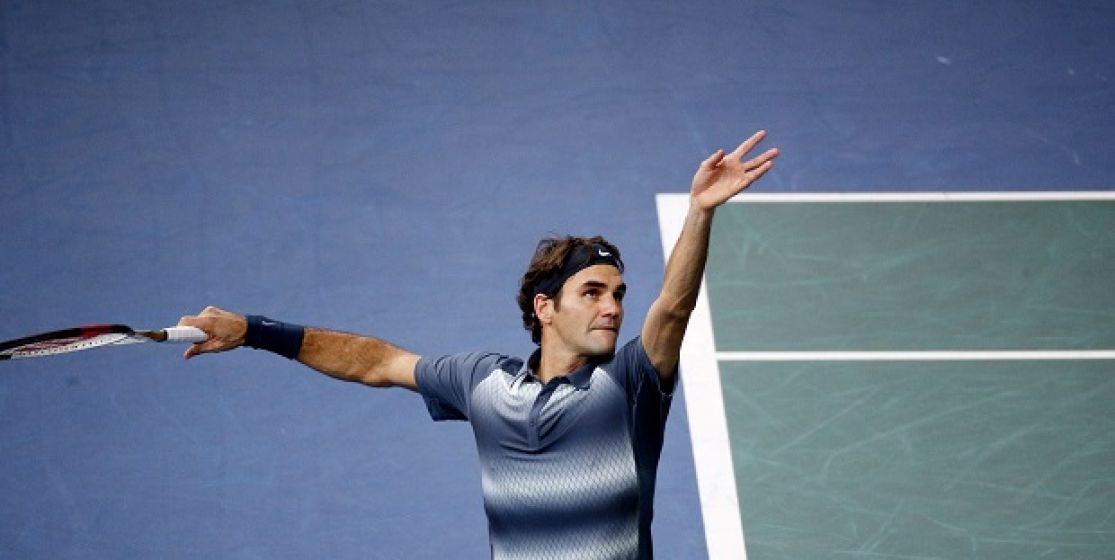The best servers in tennis history are called Pete Sampras, Boris Becker, Richard Krajicek, Greg Rusedski, Mark Philippoussis, Marc Rosset, Michael Stich, Goran Ivanisevic and Andy Roddick... But what do they have in common? Their height. It oscillates between 6 feet 2 and 6 feet 7. A question then arises: Does being tall help to be a good server?
«Being tall, it’s a huge advantage to serve well. » Lawrence Raymond, former coach of Fabrice Santoro, Michael Llodra, or Albano Olivetti doesn't beat about the bush. Before picking up in the aftermath: "It's also important to have a very good technique." But he's not the only one to defend this thesis, Marc Rosset takes over: "The taller you are, the more substantial margin of safety you have. It's a simple question of angle." Before rectifying in turn: "But you can still serve very well without being 6.5. Roger Federer isn't the tallest player of the tour but he serves very well. He won a lot of easy points with his service in his career because he has unreadable moves. Whether he slices, lifts, sends the ball in the middle, on the body, the gesture remains exactly the same... On another note, Fabrice Santoro wasn't that tall neither, nor the most powerful player but his balls were very hard to return..." Behind a slightly abrupt gesture that seems to favour the tallest, the service is actually a very sharp mechanics, where every detail counts.
First and second ball
When you talk about the service, you first have to contradict a popular belief: the ace would be the best weapon of the good server. "Wrong, says Marc Rosset. Aces are not as important as that. A service winner is not as glamour, is not accounted for in the same way, but brings the same." You then have to confirm another: without first ball, difficult or impossible to win a game. "Pete Sampras has never won a match with less than 55% of first serve. The statistics prove it: Take a match, you need to be between 60 and 65% of first serve" continues the Swiss. Lawrence Raymond agrees, "To serve well is to be over 65% of first serve." Eric Deblicker, who has coached the best French players, from Henri Leconte to Richard Gasquet, corrects: "On clay, this truth doesn't hold. Spanish players often serve the first-second with a lot of effects. The percentages of first serves are not the same and there is much less winning services. This is especially true on fast surfaces." And the second ball? "To serve well is first and foremost serve well in the second service ball, otherwise you are vulnerable, according to Laurent Raymond. It is useless to only have a first ball." The service is actually an equation with two interdependent unknowns which are complementaries while none of them is actually more important than the other.
A complex balance
The two men also agree on the definition of a good service. Raymond Lawrence throws the ball in the air first: "To serve well, you need to have a unique way to hit the ball, regardless of the effect that you want to give it". Marc Rosset continues: "Some players serve very fast but throw the ball to the left or right to make slices or lifts. Their services become legible and easy to counter for the opponent. Conversely, if a player can find eight different areas on a same throw, returning it becomes complicated. The most unreadable servers are Roger Federer, Goran Ivanisevic or Rafael Nadal who puts so much effect that the guys in front miss their returns. Yet their service is not at 150 mph." The Swiss then handles the ball strike: “The service is a complex balance between power, calm and speed of execution. This is not always the sturdiest who serves the fastest. When I was a player, I may have been tall, in terms of strength, I wasn't that good. This didn’t prevent me to serve quickly." It's time for Eric Deblicker to intervene and end the point: “To serve well, you have to get as much free points on your serve as you can."
A matter of mental
But Marc Rosset, who has many things to say, keeps going and pours a last ladle: "Deep in the ATP rankings, they are players who are 6.5 and serve well but don't take off because their percentage of first serve drop in difficult times. It's not only about serving well for a match if you get stuck at 4-4 in the money time... A great server, it's a guy who is strong in his head." And to conclude, «Guys like Isner, Karlovic... Players like that, they can play aces for hours. But in the 5th set, at 8 all, do they really have the mental to hit the services needed to win a match?». Game, set and match.






